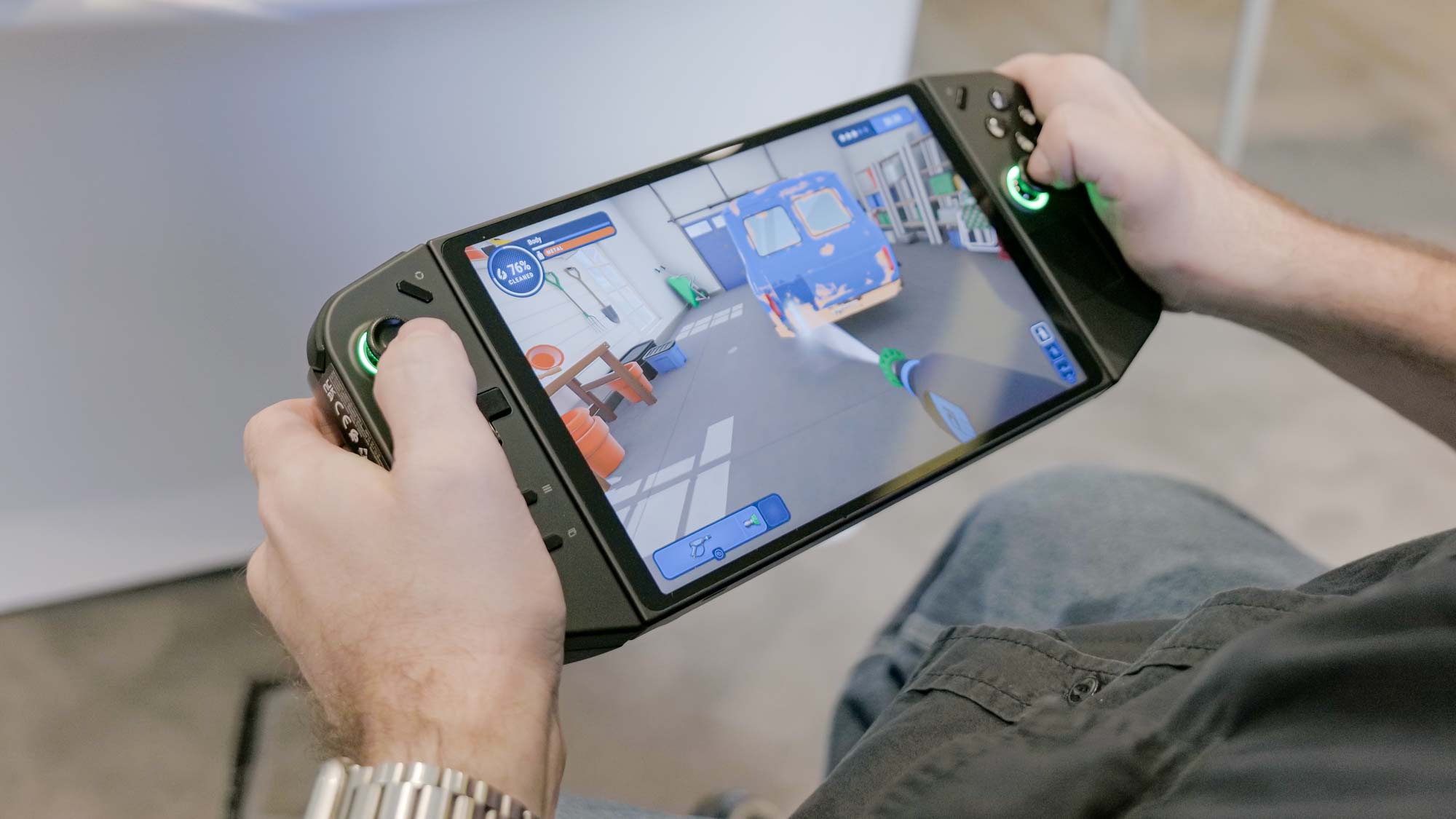Lenovo Legion Go: release date, price, specs and more
Nintendo Switch meets Steam Deck in this potentially elite handheld device

There's a new player in the handheld PC market, with the official reveal of the Lenovo Legion Go.
This portable gaming PC looks to share the best elements of both the Steam Deck and the Nintendo Switch. The Lenovo Legion Go is powered by Windows 11, and features Joy-Con-like detachable controllers.
We recently went hands-on with the Lenovo Legion Go, and it's already looking like it could be one of the best handheld gaming consoles.
Lenovo Legion Go: Release date and price

The Lenovo Legion Go is set to launch in October, with a starting price of $699. The upcoming portable PC can be pre-ordered from Lenovo's website, and it will be available from retailers such as Best Buy and Micro Center upon release.
For reference, the base models of the Steam Deck and Asus ROG Ally start off at $399 / $599 respectably. Yes, the Legion Go is more expensive, but as we'll shortly cover, the specs look to justify that price point.
Lenovo Legion Go: Design and display

The Legion Go sports a 8.8-inch QHD+ display (screen resolution is 2560 x 1600). Impressively, we're dealing with a touch panel that can also reach a refresh rate of 144Hz.
Compared to the native 1280 x 800, 7-inch panel of the Steam Deck — which is limited to 60Hz — that looks like a game-changing upgrade on paper.
Sign up to get the BEST of Tom's Guide direct to your inbox.
Get instant access to breaking news, the hottest reviews, great deals and helpful tips.
Based on our brief hands-on with the hardware, purely from a resolution standpoint, the Legion Go should smoke both the Deck and the Switch.
It also takes wise design cues from the Nintendo Switch OLED. Unlike Steam Deck, the Go packs in a kickstand. That should make it perfect for plunking it down on your coffee table to test out the best PC games when you can't quite muster the enthusiasm to hold the device in your hands and want to pair it with a gamepad.
Like Nintendo's premium OLED handheld, the Legion Go boasts slim bezels. As for its button layout, it sticks to a formula similar to that of the Steam Deck. We're talking four face buttons, four additional shoulder inputs, two analog sticks, a D-pad and four function buttons.
Unlike its handheld competitors, the detachable right pad also has a scroll wheel. This cool feature is bolstered by a controller base, which essentially lets you use said controller as a mouse alternative.
Lenovo Legion Go: Specs

From a specs perspective, the Legion Go looks like a standard-setter in the handheld space. It packs in an AMD Ryzen 1 Extreme chip, which is a custom Zen 4 APU that features eight Zen 4 cores and 12 RDNA 3 compute units. These specs are roughly in line with the impressive Asus ROG Ally.
If these early figures are accurate, this points to the Legion Go being far more powerful than the Steam Deck. For context, the ROG Ally features the same chipset as the Legion Go, so it looks like this little console could double the performance of Valve's breakout handheld sensation.
Lenovo Legion Go: AR glasses

The Lenovo Legion Go will also support augmented reality glasses to act as part of its ecosystem.
The Lenovo Legion Glasses will launch alongside the handheld, as well as the Lenovo Legion 9i gaming laptop.
Said AR spectacles will function as an external 27-inch monitor capable of displaying a 60Hz signal at 1080p per eye. Though Lenovo is launching these glasses alongside its two upcoming gaming devices, they won't necessarily be restricted to these pieces of hardware going forward.
Lenovo Legion Go: Outlook

The Lenovo Legion Go looks like the real deal. Thanks to its Steam Deck-beating display and impressive APU, this could be the handheld gaming PC going forward.
There's no doubt the Go is entering a crowded market currently dominated by the Nintendo Switch and Steam Deck. Yet considering the specs Lenovo's device is packing under the hood for the starting price of $699, this palm-friendly console is going to be seriously tempting for hardcore gamers.
More from Tom's Guide

Dave is a computing editor at Tom’s Guide and covers everything from cutting edge laptops to ultrawide monitors. When he’s not worrying about dead pixels, Dave enjoys regularly rebuilding his PC for absolutely no reason at all. In a previous life, he worked as a video game journalist for 15 years, with bylines across GamesRadar+, PC Gamer and TechRadar. Despite owning a graphics card that costs roughly the same as your average used car, he still enjoys gaming on the go and is regularly glued to his Switch. Away from tech, most of Dave’s time is taken up by walking his husky, buying new TVs at an embarrassing rate and obsessing over his beloved Arsenal.
